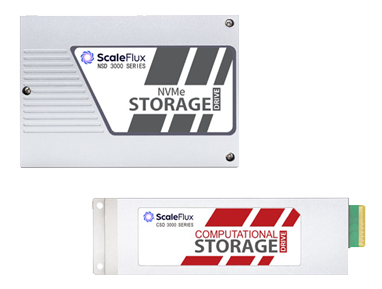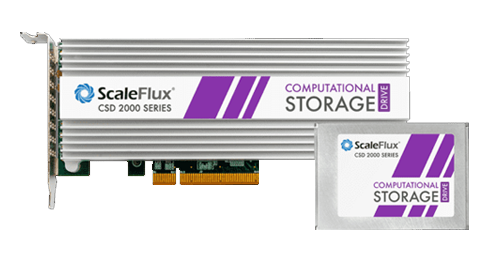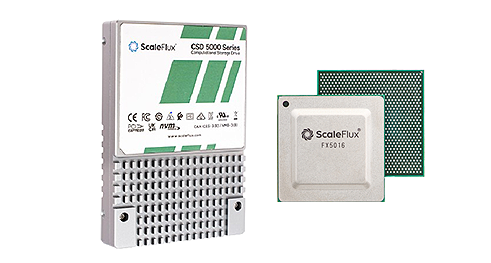Tailor-made for the enterprise sector, the better SSD, CSD 3000, promises to unlock the full potential of flash memory. It is an innovative solution that optimizes storage-centric processing using its embedded storage processors, freeing up the central processing unit (CPU) for other critical operations. The result is an impressive improvement in capacity, endurance, and latency performance, pivotal factors for any business in this data-driven age.
Modernize the data pipeline with computational storage

ScaleFlux helps customers harness data growth as a competitive advantage by rethinking the data pipeline for the modern data center. The company is passionate about bringing innovative technologies to market by building products that accelerate value creation from data while reducing complexity. With its initial products, ScaleFlux offers a simple solution to enterprise customers struggling with data-hungry workloads - a better SSD built with computational storage. Learn more at ScaleFlux.
Addressing Data Growth
Workloads demand more performance and more data than ordinary SSDs can handle. Drive performance specs rarely reflect how the drive will perform in your workloads over the long term. ScaleFlux drives are optimized for the mix of reads and writes and the data types used in enterprise applications.

Products
CSD 2000 Series
Where other SSDs' performance rapidly drops off as even a small percentage of writes are introduced into the workload, the CSD 2000's data path compression/ decompression engines enable the drive both to store more GB of data per GB of Flash and to maintain high performance within a narrow band regardless of the read/write mix. The CSD 2000 Series combines up to 8TB of the latest 3D NAND Flash technology with hardware-accelerated compute engines, achieving incredible data read/write speeds and consistently low latency to boost application performance.
CSD 5000 Series
The CSD 5000, designed for the enterprise sector, is intended to improve data storage performance and efficiency. This innovative SSD has ScaleFlux's FX5016 storage processor, which improves storage-centric processing while freeing up the CPU for other essential duties. The CSD 5000 offers amazing capabilities, including up to 256TB of effective capacity and built-in write reduction technology, allowing for greater capacity usage without performance compromise. The SSD is suited for demanding applications like AI/ML, HPC, and transaction processing, as it delivers twice as much performance per watt as its predecessor, the CSD 3000. The CSD 5000, with enhanced data security features and complete business management, is designed to fulfill the stringent requirements of modern data centers and enterprises.
Benefits
This groundbreaking SSD utilizes standard NVMe drivers, a well-established protocol for nonvolatile memory technologies like SSDs. This ensures it brings no complexity and is as easy to use as any other NVMe SSD, creating a seamless deployment process.
Fast
Drastically increase storage I/O rates, reducing the number of CPU cycles wasted waiting for data. Built-in compression/decompression engines further accelerate system performance by offloading this burdensome function from the CPU.
Efficient
More storage per dollar. More performance per watt. More performance per system and extended endurance.
Easy
Utilizes standard NVMe drivers and commands, a well-established protocol for nonvolatile memory technologies. Ensures it brings less complexity than any other NVMe SSD thus creating a seamless adoption process for IT. No OS changes, no app integration, no software to install.
Solution Brief
Testing the Value of ScaleFlux CSDs for MySQL
Can CSDs (Computational Storage Drive) Deliver Compression Without Compromising Performance?
Deploy MySQL with 2x the performance on half the infrastructure.
Leverage transparent compression in hardware to improve query response times,
reduce latency variation, and increase system efficiency.








